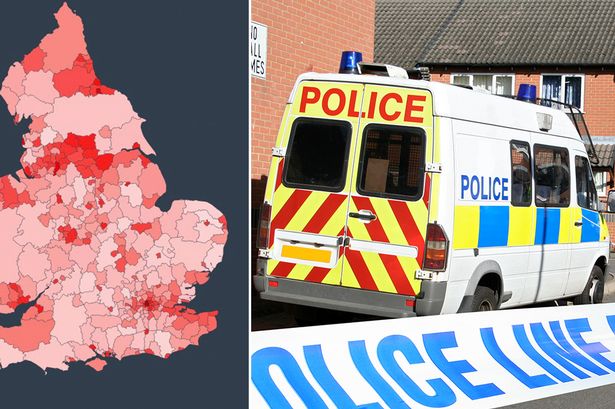The year ending September 2024 witnessed a concerning volume of recorded crime across England and Wales, exceeding five million non-fraud offenses. This data, compiled from the 43 domestic police forces, paints a complex picture of criminal activity across the two nations, highlighting regional variations and specific crime trends. Understanding these patterns is crucial for effective resource allocation, targeted policing strategies, and community safety initiatives. While aggregate figures provide a general overview, examining the data at a more granular level, specifically at the local police force area, reveals a more nuanced understanding of the challenges faced by different communities. This detailed analysis allows for a comparison of crime rates, enabling identification of hotspots and areas requiring particular attention.
A thorough exploration of the data reveals significant disparities in crime rates across different police force areas. Some areas experienced significantly higher crime rates than others, raising questions about the underlying factors contributing to these variations. Socioeconomic conditions, demographics, policing strategies, and community engagement initiatives are all potential influences on crime rates. Understanding these contributing factors is crucial for developing effective crime prevention strategies tailored to the specific needs of each region. Beyond simply ranking police force areas by overall crime rates, it’s essential to delve into the specific types of crime prevalent in each area. This allows for a more accurate assessment of the risks faced by communities and facilitates the development of targeted interventions.
Further analysis reveals not only the overall crime volume but also the specific types of offenses recorded. This breakdown offers valuable insights into the nature of crime within each area, revealing whether certain types of crime are more prevalent than others. For instance, some areas might experience higher rates of violent crime, while others may be plagued by property crime or anti-social behavior. This nuanced understanding enables police forces to tailor their resources and strategies more effectively. By focusing on the specific crime types prominent in each area, law enforcement can implement targeted interventions and preventative measures to address the root causes of these offenses.
Examining the data over time allows for the identification of trends and emerging challenges. Analyzing how crime rates have changed in different police force areas over the past few years can reveal whether certain types of crime are increasing or decreasing, and whether specific areas are experiencing escalating crime rates. This historical context is crucial for understanding the long-term impact of crime on communities and for developing sustainable crime reduction strategies. By identifying emerging crime trends early on, police forces can proactively implement measures to mitigate their impact and ensure the safety and well-being of the population.
Beyond the statistical analysis, it’s crucial to consider the human impact of these crime figures. Behind every statistic is a victim, and these numbers represent a significant burden on individuals, families, and communities. Understanding the emotional, psychological, and financial toll of crime is essential for developing comprehensive support services for victims and for fostering a sense of security within communities. Effective crime prevention strategies must not only focus on reducing crime rates but also on addressing the needs of victims and promoting community resilience.
In conclusion, the recorded crime data for the year ending September 2024 provides a valuable resource for understanding the complex landscape of crime across England and Wales. While the overall figures highlight the significant volume of crime, the real value lies in the detailed analysis of crime rates and types within individual police force areas. This granular approach allows for the identification of specific challenges, emerging trends, and the unique needs of each community. By combining statistical analysis with a deep understanding of the social context and the impact of crime on individuals and communities, we can develop more effective, targeted, and sustainable strategies to reduce crime, support victims, and build safer communities for all. This data serves not as an endpoint, but as a starting point for ongoing dialogue, collaboration, and action to address the complex issue of crime and its impact on society.














